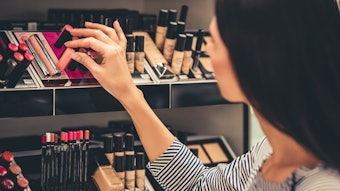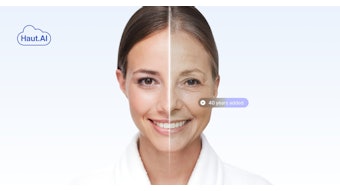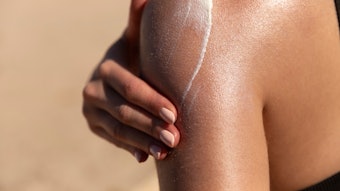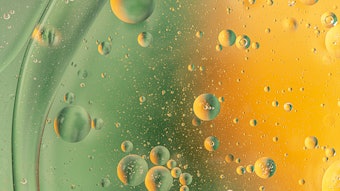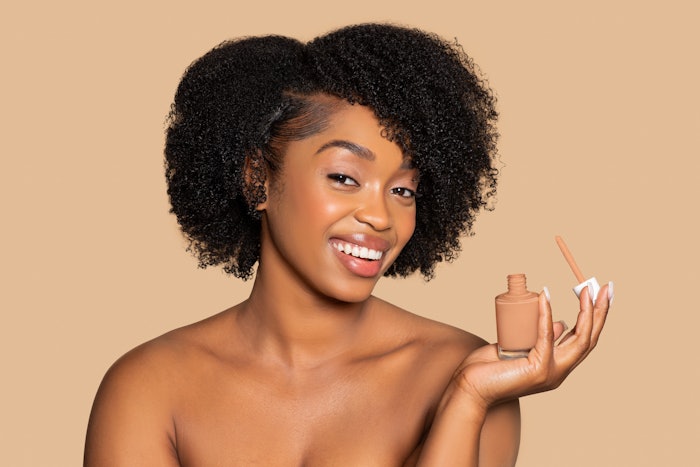
While sunscreen—and, to some extent, SPF-infused products—can be seasonal, the growing incorporation of sun defense into a growing array of beauty segments is making protection more of a year-round, cross-category phenomenon. Paired with new ingredients and advances in testing, this movement is poised for ongoing growth. In fact, the global sun protection marketa, comprising only adult sunscreens, sun sprays and after-sun lotions, per Statista, was valued at nearly $11.5 billion in 2024—and is projected to grow at almost 3.9% annually through 2029. Given the proliferation of sun defense into a growing array of product categories, that’s just the tip of the SPF beauty iceberg. Let’s break down the top product innovation and marketing targets for brands in 2025 and beyond.
The Beautification of Sun Defense
Google Trend search data for December 2023-December 2024 reveals that top SPF-related searches in the United States included queries for face creams and eye correctors, products with SPF 50 claims, lip balms and melt-in formats.
The data reveals a general trend toward SPF beauty across categories, as well as a desire for high defense.
A June 2024 Spate reportb backed up this general trend. At the time, the firm noted a search spike for the Alastin brand, which was directly associated with consumer interest in tinted sunscreens/tinted SPF.
The desire for skin care-makeup hybrids has been gaining steam in recent years, though the Alastin brand also benefits from its clinically backed positioning, per Spate. This focus on proven efficacy is part of a larger trend impacting the whole of the skin care sector.
What Consumers Want from Sun Care
Spate offered a breakdown of consumer preferences around sunscreens and other SPF beauty products. Based on its analysis, consumers are looking for:
- Sun care-skin care hybrids such as SPF-powered anti-agers and tinted moisturizers
- Mineral formulations, led by zinc, with titanium dioxide queries lagging far behind
- Formulations ideal for sensitive and mature skin
- Lightweight formats such as water-based formulations and balms
- Portable options such as sticks (see K-beauty Sun Care)
In addition, consumers showed interest in novel formats such as gel sunscreens, as well as expanded applications, particularly hair sunscreens.
Interest in hair solutions have tracked with increased SKUs in the space, including Sun Bum’s SPF 30 Scalp Hair Mist, Banana Boat’s Hair & Scalp Defense Sunscreen Spray SPF 30, Supergoop!’s Poof 100% Mineral Part Powder SPF 35, and Coola’s Scalp & Hair Mist Sunscreen SPF 30.
K-beauty Sun Care
 K-beauty is once again having a moment in the U.S. market, driving sales for Korean brands, as well as inspiration for Western players; sun care is no exception.Luoxi at Adobe Stock
K-beauty is once again having a moment in the U.S. market, driving sales for Korean brands, as well as inspiration for Western players; sun care is no exception.Luoxi at Adobe Stock
“[T]he growth in searches for Korean sunscreen and its very high volume indicates this trend’s high potential,” Spate’s report explains, adding that “this trend refers to the concept of the Korean sunscreen—and associated characteristics—rather than specific Korean brands…”
Key concerns associated with Korean sunscreen queries include oily, sensitive and acne-prone skin. Interest in the category also includes unique formats such as sprays, mists and, of course, sticks.
To illustrate how these trends have manifested in the market, a June 2024 Spate report revealed a spike in U.S. online searches for the K-beauty brand Tocobo, spurred by interest in its Cotton Soft Sun Stick SPF50 PA++++.
The non-sticky vegan stick comprises cotton extract and offers easy portability. Furthermore, the product’s formulation delivers UVA and UVB protection, anti-inflammatory benefits and sebum control. This multifunctionality and ease of use highlight key facets tht shoppers find attractive in the K-beauty space.
When it comes to Korean sunscreens, there are some key considerations to take into account. Notably, many of these products are formulated with more advanced UV filters compared to what one might see in the U.S. market.
This shouldn’t be surprising, given that the United States has not approved new UV filters since 1999, inhibited by our regulation of filters as drugs. Furthermore, Korean sunscreens have lightweight formulations (designed for reapplication) versus American formulations that tend to be thicker in consistency.
New Tools for Combatting UV Exposure
Beyond what the search data reveals, emerging ingredient technologies offer enhanced SPF beauty performance and sensory experiences.
UVB-triggered UVA Absorber
During the December 2024 Society of Cosmetic Chemists’ 78th (SCC78) Annual Scientific Meeting and Technology Showcase, Judit Carmago, Ph.D., of Roka Furadada reported that methoxyphenylethenyl t-butylbenzoate (MPEBB), a photochemical precursor, becomes a UVA absorber when exposed to UVB.
The transformation takes place through a photo Fries reaction, Carmago explained. As a result, MPEBB increases UVA protection over time to protect against photoaging, cell death, oxidative stress, inflammation and dermis degradation.
Cellulose to Boost SPF
During another SCC78 presentation, Deby Fapyane, Ph.D., of Cellugy ApS, explored the use of a redispersable cellulose powder to boost high-performing SPF.
The cellulose was fabricated by bacteria and reportedly demonstrated a unique 3D network of thin crystalline cellulose fibrils interwoven in water, which can stabilize active ingredients and form a protective barrier against UV radiation.
Per Fapyane, these characteristics position the cellulose as a powerful SPF booster.
High-SPF Encapsulated UV Filter Blends
Elsewhere, during the 2024 edition of in-cosmetics Asia, Clariant highlighted a lineup of high-performance ingredients, including the Eclipsogen CAP series of encapsulated UV filters, featuring the company's Nanocon encapsulation technology.
Per Clariant, even at low concentrations in formulas, Eclipsogen CAP helps to achieve high SPF values in sun care products.
The technology is reportedly cold processable, readily compatible with sunscreen ingredients, and enables light skin sensory benefits with no white cast.
Enhancing Sun Care Sensory Attributes & Zinc Loads
 During SCC78, Bryan Taylor and Anna Wojkowski of Inolex, Inc., offered ideas to “democratize” dispersion by improving bio-based dispersing fluids for ZnO.wavebreak3 at Adobe Stock
During SCC78, Bryan Taylor and Anna Wojkowski of Inolex, Inc., offered ideas to “democratize” dispersion by improving bio-based dispersing fluids for ZnO.wavebreak3 at Adobe Stock
Novel dispersing media were reportedly developed based on combinations of biobased esters with specific grades of polyhydroxystearic acid (PHSA). These esters—heptyl undecylenate, diisooctyl succinate and triheptanoin with PHSA—were evaluated as dispersing media for uncoated, non-nano and UV grade ZnO.
Per the team’s presentation abstract, dispersions were evaluated for viscosity as functions of PHSA and ZnO, then used to make w/o and o/w emulsions that were characterized by rheological analysis and UV transmittance.
Findings showed the “unique combination of biobased esters and broad molecular weight distribution PHSA exhibited dramatically lower viscosities than dispersions based on caprylic/capric triglyceride, enabling higher solids loadings of ZnO and more desirable rheological and sensory profiles for sunscreens.”
Smart Pigments for Transforming Blue/Visible Light
During SCC78’s inclusive beauty session, Joan Attia, Ph.D., of Lucas Meyer Cosmetics described “smart pigments (SP),” i.e., a mixture of fluorochromes that can reportedly transform blue/visible light to higher wavelengths, protecting the skin and improving mental health.
Attia explained, “SPs represent a new category of ingredients, able to capture harmful unbalanced light, such as blue light emitted by digital screens, blocking its effects on skin, and converting it into more beneficial light for both skin and general well-being.”
Ingestible After-sun Recovery Booster
 During SCC78’s inclusive beauty session, Joan Attia, Ph.D., of Lucas Meyer Cosmetics described “smart pigments (SP),” i.e., a mixture of fluorochromes that can reportedly transform blue/visible light to higher wavelengths, protecting the skin and improving mental health.Jacob Lund at Adobe Stock
During SCC78’s inclusive beauty session, Joan Attia, Ph.D., of Lucas Meyer Cosmetics described “smart pigments (SP),” i.e., a mixture of fluorochromes that can reportedly transform blue/visible light to higher wavelengths, protecting the skin and improving mental health.Jacob Lund at Adobe Stock
The supplement, in the form of a 25-ml daily shot, includes the company’s Velious flavor technology, which “conceals unpleasant tastes and improves product palatability,” per Tosla. This masking technology, in addition to xylitol, supports the supplement’s Sicilian red-orange flavor, which renders the daily shot more palatable to users.
Per Tosla, after eight weeks of administration in a clinical trial, the product reduced participants’ skin redness by 46.2% 24 hours after UVB exposure, in turn increasing the minimal erythema dose by 23.8%.
According to the company, Lumina365 therefore can provide an additional layer of whole-body sun protection when used with topical sunscreens.
Tosla’s chief innovation officer, Uroš Gotar, explains, “We saw an opportunity in the sun care market for multifunctional products that not only protect, but enhance skin’s appearance. Lumina365 represents this new wave of ‘beautifying’ sun protection, combining functional benefits with aesthetic appeal.”
A Sunscreen-friendly Brightener
Evolved By Nature has debuted a new bioactive peptide, Activated Silk 8A-α, which is reportedly safe for sensitive skin and stable in sunscreen formulations, whereas many other skin brighteners are not.
According to the company, the ingredient supports natural late-stage cell differentiation and is clinically proven to turn the skin “on” to reduce the appearance of hyperpigmentation and improve the appearance of skin brightness.
Activated Silk 8A-α is said to provide the benefits of exfoliation from the inside out, making “unreliable vitamins and chemical peels a thing of the past.”
Activated Silk 8A-α functionality, paired with its unique stability, makes it a candidate for delivering skin care-sun care hybrids.
A New Era for SPF & Sun Defense Testing
SPF beauty testing has also advanced, offering new tools to product innovation, marketing and compliance teams.
A New ISO Standard for in vitro SPF Testing
Published in December 2024, ISO 23675:2024 comprisesc the in vitro determination of static sun protection factors. Notably, this method is “not applicable for the determination of water-resistance properties of a sun protection product.”
Per the ISO publication, the method is “applicable to sunscreen products in form of an emulsion or alcoholic one-phase formulation, excluding in form of a loose or compressed powder or stick.”
The publication includes details on the “determination of the spectral absorbance characteristics of SPF protection in a reproducible manner.”
Sunscreens’ Temperature Factor
How important is temperature to the performance and behavior of sunscreens? Very.
During SCC78, Samuel Gourion-Arsiquaud, Ph.D., of TRI Princeton, outlined how an increase in temperature impacts the penetration of sunscreen into skin. Visualization was performed by vibrational imaging spectroscopy and HPLC methodologies.
The results showed a correlation between the external temperature and penetration of organic UV filters, where 42°C/107.6°F increased the penetration of organic UV filters into the skin, while physiological conditions (32°C/89.6°F) and lower temperatures (20°C/68°F) restricted it.
Significant differences in behaviors between encapsulated and non-encapsulated formats also were recorded.
“Based on our findings, we recommend evaluating sunscreen formulations at higher temperatures than the current standard of 32°C,” Gourion-Arsiquaud said.
SPF Beauty: What’s Next?
From better testing to establish claims and performance to new ingredients offering enhanced defense and holistic care, the SPF beauty space is poised for growth and innovation that meets the convenience, functionality and safety demands of today’s shopper.
FOOTNOTE
awww.statista.com/outlook/cmo/beauty-personal-care/skin-care/sun-protection/worldwide#revenue
cwww.iso.org/standard/76616.html






